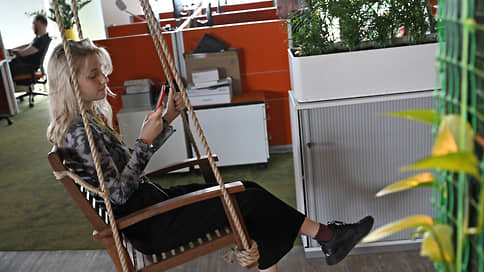There was an office, there was a house – Newspaper Kommersant No. 184 (7385) dated 10/05/2022
[ad_1]

The historically instantaneous adoption of remote work technologies by companies in connection with the COVID-19 pandemic is irreversible, according to a group of economists who studied this effect in the world’s largest office cluster – New York. A long-term fall in the cost of offices in the city by 40% will lead in the medium term to the restructuring of part of them into housing. Only Class A offices have a stable future, as symbols of the prestige and reputation of companies in markets where it is critically needed. If this assumption comes true, business culture will change throughout the rest of the world.
The work of three New York economists — Arpit Gupta of New York University (Stern Business School), Vrinda Mittal and Stijn van Neueverburg of Columbia University — was published in an NBER association series in late September and is titled extremely categorically: “Work from home and the apocalypse in the office real estate market. Assumptions that the COVID-19 pandemic will greatly change the situation in the office market due to the prevalence of remote work have managed to become trivial, but only now there are data, and not assumptions about long-term trends in this industry. Gupta, Mittal, and van Neueverburg analyzed the New York office market from early 2020 to summer 2022 with econometric methods available since the 1990s, and their conclusions, based primarily on its financial component, are unequivocal. It is the prevalence of remote work, among many other factors, that plays a major role in what will happen to offices in New York, which determines the business culture and business standards for multinational corporations – and through them the rest of the world: the cost of New York offices in in the medium term will decrease by 39%, certain segments of the market will become unclaimed.
According to the calculations of Gupta, Mittal and van Neueverburg, at current prices, New York real estate will lose about $ 0.5 trillion in value – the only question is how quickly and according to a collapse or evolutionary scenario. The only exceptions will be the most expensive class A offices, which will remain in demand and will not lose value due to their importance for the work of the largest companies – the demand for this type of real estate will be supported by considerations of prestige and business reputation. The main factor that will destroy the lower quality segments of the office market is the lack of need for “physical” jobs. The authors worked, among other things, with data on the dynamics of physical workload of offices in different periods of 2020–2022 and in previous years and argue that there are no scenarios in which at least New York (and most likely this is a universal scenario for business centers in the US in general) will return to the “pre-Covid” model and the former workload of offices.
The paper points out, among other things, that it makes sense to prepare for the “apocalypse” of office real estate – including defaults on derivative securities, the peak of non-renegotiation of lease contracts in 2026-2028, problems with the finances of city governments ( they in the US traditionally depend on income from the rental of municipal real estate), problems with financial stability in general. For the unclaimed New York offices themselves, Gupta and colleagues suggest not to worry – the process of their rapid restructuring into multi-apartment residential complexes is almost inevitable, in some cases it will be supported by municipalities. The translation of the process outside of New York is not specifically described by the authors, but it is not difficult to predict: the new business culture will spread not only in the largest US city. If the authors are right, this trend can only be changed by events that surpass the pandemic in scale and influence — economists have no reason to even assume such a change in the structure of the market.
[ad_2]
Source link






